-
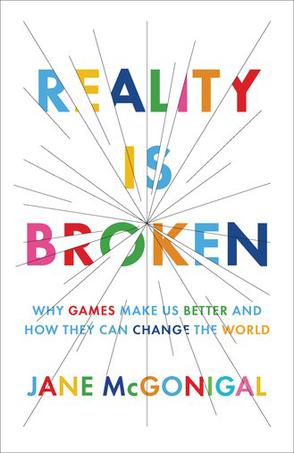
Reality Is Broken
Visionary game designer Jane McGonigal reveals how we can harness the power of games to solve real-world problems and boost global happiness. More than 174 million Americans are gamers, and the average young person in the United States will spend ten thousand hours gaming by the age of twenty-one. According to world-renowned game designer Jane McGonigal, the reason for this mass exodus to virtual worlds is that videogames are increasingly fulfilling genuine human needs. In this groundbreaking exploration of the power and future of gaming, McGonigal reveals how we can use the lessons of game design to fix what is wrong with the real world. Drawing on positive psychology, cognitive science, and sociology, Reality Is Broken uncovers how game designers have hit on core truths about what makes us happy and utilized these discoveriesto astonishing effect in virtual environments. Videogames consistently provide the exhilarating rewards, stimulating challenges, and epic victories that are so often lacking in the real world. But why, McGonigal asks, should we use the power of games for escapist entertainment alone? Her research suggests that gamers are expert problem solvers and collaborators because they regularly cooperate with other players to overcome daunting virtual challenges, and she helped pioneer a fast-growing genre of games that aims to turn gameplay to socially positive ends. In Reality Is Broken , she reveals how these new alternate reality games are already improving the quality of our daily lives, fighting social problems such as depression and obesity, and addressing vital twenty-first-century challenges-and she forecasts the thrilling possibilities that lie ahead. She introduces us to games like World Without Oil, a simulation designed to brainstorm-and therefore avert- the challenges of a worldwide oil shortage, and Evoke, a game commissioned by the World Bank Institute that sends players on missions to address issues from poverty to climate change. McGonigal persuasively argues that those who continue to dismiss games will be at a major disadvantage in the coming years. Gamers, on the other hand, will be able to leverage the collaborative and motivational power of games in their own lives, communities, and businesses. Written for gamers and nongamers alike, Reality Is Broken shows us that the future will belong to those who can understand, design, and play games. -
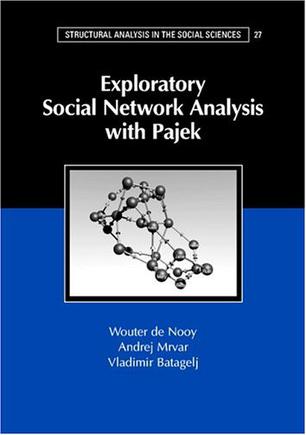
Exploratory Social Network Analysis with Pajek
This is the first textbook on social network analysis integrating theory, applications, and professional software for performing network analysis (Pajek). Pajek software and datasets for all examples are freely available, so the reader can learn network analysis by doing it. In addition, each chapter offers case studies for practicing network analysis. The book will enable the reader to gain the knowledge, skills, and tools to apply social network analysis in all social sciences, ranging from anthropology and sociology to business administration and history. ======== Table of contents Part I. Fundamentals 1. Looking for social structure 2. Attributes and relations Part II. Cohesion 3. Cohesive subgroups 4. Sentiments and friendship 5. Affiliations Part III. Brokerage 6. Center and periphery 7. Brokers and bridges 8. Diffusion Part IV. Ranking 9. Prestige 10. Ranking 11. Genealogies and citations Part V. Roles 12. Blockmodels Appendix 1. Getting started with Pajek Appendix 2. Exporting visualizations Appendix 3. Shortcur Key Combinations -
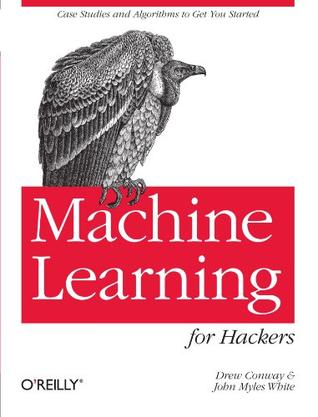
Machine Learning for Hackers
Now that storage and collection technologies are cheaper and more precise, methods for extracting relevant information from large datasets is within the reach any experienced programmer willing to crunch data. With this book, you'll learn machine learning and statistics tools in a practical fashion, using black-box solutions and case studies instead of a traditional math-heavy presentation. By exploring each problem in this book in depth - including both viable and hopeless approaches - you'll learn to recognize when your situation closely matches traditional problems. Then you'll discover how to apply classical statistics tools to your problem. Machine Learning for Hackers is ideal for programmers from private, public, and academic sectors. -

复杂网络理论及其应用
国内首部复杂网络专著 【图书目录】 第1章 引论 1.1 引言 1.2 复杂网络研究简史 1.3 基本概念 1.4 本书内容简介 参考文献 第2章 网络拓扑基本模型及其性质 2.1 引言 2.2 规则网络 2.3 随机图 2.4 小世界网络模型 2.5 无标度网络模型 2.6 局域世界演化网络模型 2.7 模块性与等级网络 2.8 复杂网络的自相似性 参考文献 第3章 Internet拓扑特性及建模 3.1 引言 3.2 Internet的拓扑特性 3.3 随机图产生器 3.4 结构产生器 3.5 基于连接度的产生器 3.6 多局域世界模型 3.7 各类模型的定性比较 参考文献 第4章 复杂网络上的传播机理与动力学分析 4.1 引言 4.2 复杂网络的传播临界值理论 4.3 复杂网络的免疫策略 4.4 复杂网络的传播动力学 4.5 计算机病毒在Internet上的传播 4.6 复杂网络中的其他传播现象 参考文献 第5章 复杂网络上的相继故障 5.1 引言 5.2 复杂网络相继故障的动态模型分析 5.3 基于耦合映象格子的相继故障模型 参考文献 第6章 复杂网络中的搜索 6.1 引言 6.2 社会网络搜索 6.3 几种复杂网络搜索策略分析 6.4 P2P网络中的搜索 6.5 复杂网络中的搜索和拥塞 参考文献 第7章 复杂网络中的社团结构 7.1 引言 7.2 Kernighan—Lin算法 7.3 谱平分法 7.4 分裂方法 7.5 凝聚算法 7.6 派系过滤算法 参考文献 第8章 复杂网络中的同步 8.1 引言 8.2 复杂网络的完全同步判据 8.3 复杂动力网络的完全同步 8.4 连续时间时变耦合网络完全同步 8.5 其他网络完全同步判据 8.6 复杂网络中各个因子与完全同步的关系 8.7 改进复杂网络同步的方法 8.8 复杂网络的相位同步 参考文献 第9章 复杂动态网络的控制 9.1 引言 9.2 规则网络时空混沌的牵制控制 9.3 无标度动态网络的牵制控制:鲁棒性与脆弱性 9.4 一般复杂动态网络的牵制控制 9.5 随机驱动下动态网络的有序性与动力学 参考文献 附录名词对照 -
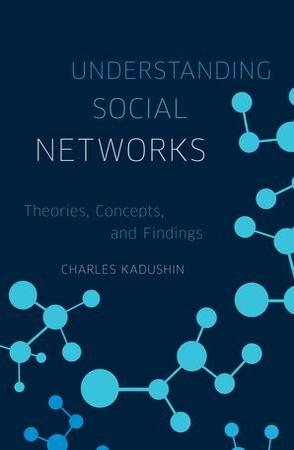
Understanding Social Networks
Despite the swift spread of social network concepts and their applications and the rising use of network analysis in social science, there is no book that provides a thorough general introduction for the serious reader. Understanding Social Networks fills that gap by explaining the big ideas that underlie the social network phenomenon. Written for those interested in this fast moving area but who are not mathematically inclined, it covers fundamental concepts, then discusses networks and their core themes in increasing order of complexity. Kadushin demystifies the concepts, theories, and findings developed by network experts. He selects material that serves as basic building blocks and examples of best practices that will allow the reader to understand and evaluate new developments as they emerge. Understanding Social Networks will be useful to social scientists who encounter social network research in their reading, students new to the network field, as well as managers, marketers, and others who constantly encounter social networks in their work. -
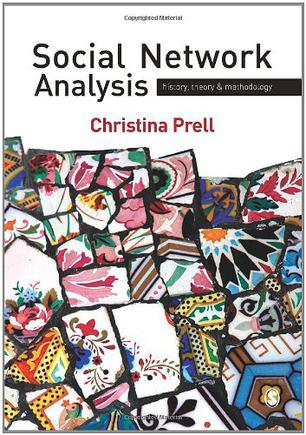
Social Network Analysis
'This book fills an important void in the social network literature by bringing together theory, methodology and history. Its practical and readable style gives clear guidance on how to do social network research and will be invaluable to anyone undertaking a network study' - Martin Everett, Chair of Social Network Analysis, Manchester University 'Christina Prell has produced an excellent and well-crafted introduction to methods of social network analysis. She has succeeded in the difficult task of setting out a clear and accessible statement of core ideas together with a judicious overview of the most advanced recent developments. Her discussion concludes with an introduction to basic software for network analysis that will be much valued by all who are new to the area. The book will become an essential guide to the field for newcomers and seasoned users alike' - John Scott, Professor of Sociology, Plymouth University We live in a world that is paradoxically small and vast: each of us is embedded in local communities and yet we are only a few 'links' away from anyone else in the world. This engaging book represents these interdependencies' positive and negative consequences, their multiple effects and the ways in which a local occurrence in one part of the world can directly affect the rest. Then it demonstrates precisely how these interactions and relationships form. This is a book for the social network novice on learning how to study, think about and analyse social networks; the intermediate user, not yet familiar with some of the newer developments in the field; and the teacher looking for a range of exercises, as well as an up-to-date historical account of the field. It is divided into three sections: 1. Historical & Background Concepts 2. Levels of Analysis 3. Advances, Extensions and Conclusions The book provides a full overview of the field - historical origins, common theoretical perspectives and frameworks; traditional and current analytical procedures and fundamental mathematical equations needed to get a foothold in the field.